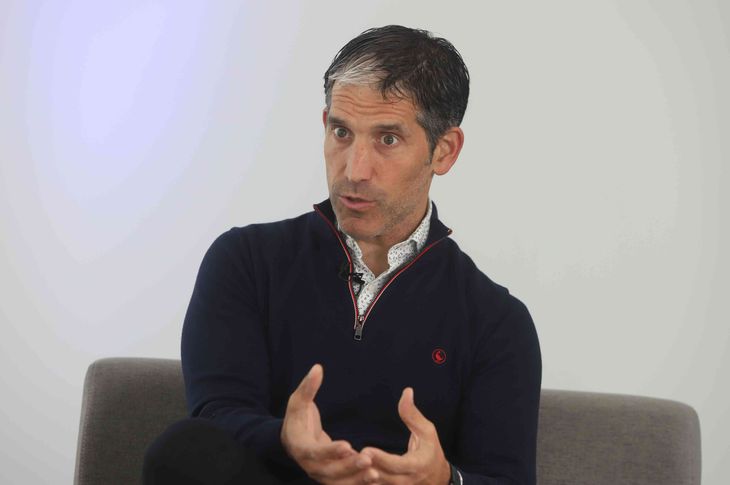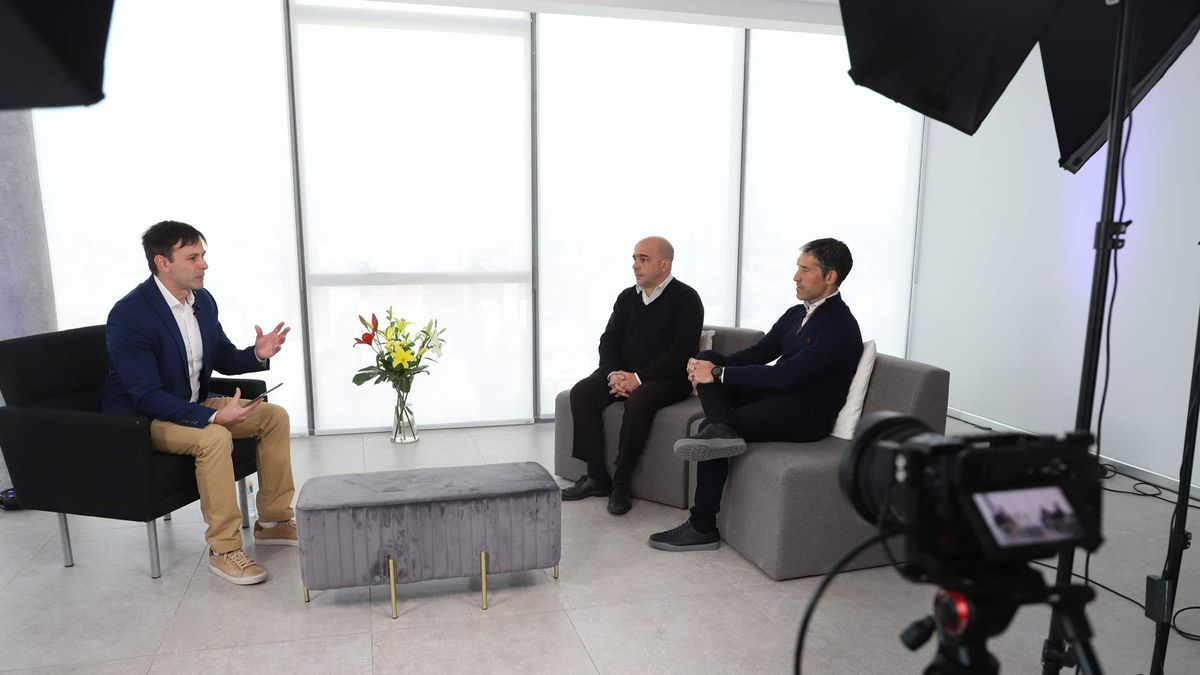During the panel, titled “Analysis, challenges and opportunities of the energy industry” and moderated by Ámbito’s politics editor, Ariel Basile, Arceo focused on the energy matrix and highlighted that “it has been diversifying in recent years, especially based on the program Renew and of MATER, that allowed the generation of renewable energy to grow, which today represents 18% of the total and will increase, although he warned that “fulfillment of the mitigation goals that Argentina presented at the UN will require it to advance even further in the next 10 years.”
“Later that will give you the green label When you want to sell the products, because it is going to increase on a global scale, look at how you produce,” he indicated and added: “Compliance with these ambitious goals requires a lot of coordination between the public and private sectors. This government has a different perspective on what has been done, so There are many unknowns about how we are going to move forward because companies may have goals, but they have to be compatible with the country’s international commitments.”
panel2.jpg
Along the same lines, Arceo considered that “Argentina is going to have to advance in mitigation measures based on the global agenda, because international trade in the next decade will have increasing barriers for countries that do not carry them forward.”
Argentina is going to have to advance on a path that is achievable. Since 2015 it has been decreasing and making the goal of reducing greenhouse gases more aggressive. Today, failures to meet these goals are not punishable, but they will probably be in the coming years,” he warned.
What happens with the changes proposed by the RIGI?
When asked about the modifications proposed by the Incentive Regime for Large Investments (RIGI), Carbajales described it as “a great umbrella for many sectors of the economy” and highlighted that “energy is one of the sectors that the government looks at most closely so that it can drive these investments.”
“It is an investment facilitator, many of which were in the portfolio and others were born in light of this RIGI. You have two years to join, it is done by project and is short-term, with 40% of the investment in the first two years. So, We will soon see if this works or not and then it will mature little by little.”he reasoned.
For Arceo, “what is relevant is how to create a LNG export platform to take advantage of gas resources, because Argentina has to supply domestic demand for 200 years.”
“The installation of certain export factors is needed. The RIGI was not the only possible vehicle, but it is a possible one for the development of these projects and The great export leap is the establishment of export liquefaction terminals. There is the project of YPF with Petronas and that of Golar with Pan American Energy “that should change Argentina’s natural gas export profile in the next decade,” he predicted, although he anticipated that this will be defined at the end of next year.
On the other hand, Carbajales added that “in environmental matters and productive development, these are the two legs that were somewhat loose in the RIGI, which does not mean that it cannot be complemented with other instruments later” and recalled that “something that is missing and it is not minor is that the province of Neuquén has not yet joined.”
At the same time, he indicated that “there are decisions that are disruptive, because we have a long tradition of first supplying local demand and today, thanks to the fact that there will be surpluses, the assumption is that we do not have to worry about the internal market.” “But “We are changing a rule that we have been accustomed to for decades,” warned about eventual adaptation.
Vaca Muerta’s opportunity
About the growth of dead cow, Arceo evaluated that “it allowed us to compensate for the decline of conventional basins” and compared: “Today Argentina will be close to producing 700 thousand barrels of production per day, a completely different picture from 5 years ago.”
“Argentina came from a decade and a half where the energy sector systematically generated a external deficit. In 2022 the deficit was almost 4.8 billion dollars and this year, with the new gas pipeline, the increase in the natural gas extraction capacity of the Neuquén basin, the fall in international prices and the increase in oil exports, he positive balance It will be close to 5,000 million dollars,” he explained.
And he went deeper: “There is a structural change: for the first time in a decade and a half, Argentina is going to have an energy sector with a surplus and growing trade balance.”
In this regard, Carbajales added: “We need to expand the gas pipeline network. The State did it with stage 1 of Néstor Kirchner, the reversal and the compressor plants. But from then on the State says that it does not do any more public works and there is another question mark.”
“The mechanism for the private sector to invest and how an investment of that type will be repaid. “They will be rules to get used to and if the industry lives up to what the government expects: that it be the private sector that invests in infrastructure,” posed as a challenge.
The decline of watersheds and costs
Likewise, the EyE representative admitted that “there is a structural decline in the basins that is taking place and the large companies focused on large investments in Vaca Muerta are going to withdraw from those mature basins”, Therefore, he considered that “the entry of small players should allow the decline to be slowed in the coming years, but Vaca Muerta is going to overshadow hydrocarbon development.”
Along these lines, Carbajales pointed out that “Thanks to Vaca Muerta, which is no more than ten years old, today we explain half of the energy” and noted: “If we didn’t have it, we would be in trouble because the decline is structural.” However, he admitted that “it may be an opportunity for the entry of new players” in mature basins.
panel222.jpg

Regarding costs, the director of the Oil and Gas Institute considered that “there is a technological challenge in how we develop our own equipment” and added that “the RIGI is not going to pull in that direction and we will have to look for other solutions.” solutions.”
Meanwhile, Arceo highlighted that “Vaca Muerta has significantly improved structure and cost in recent years and should decrease due to a question of scale and progress in the learning curve,” although he acknowledged that “In the short term, the appreciation of the exchange rate increases your costs in dollars.”
The challenges ahead
Taking all this into account, he assured that “the regulation of the new hydrocarbon law is going to be significant in how the sector is going to function in the coming years where the energy sector is going to grow, but The discussion is at what speed and that depends on the regulatory environment.”
In that vein, Carbajales defined: “In the coming years, energy will provide solutions to the economy and in previous years it had not been like that. “In that big umbrella, I think the challenges are how we can unlock the potential and how we can continue to increase the green mark of that production.”
Source: Ambito




